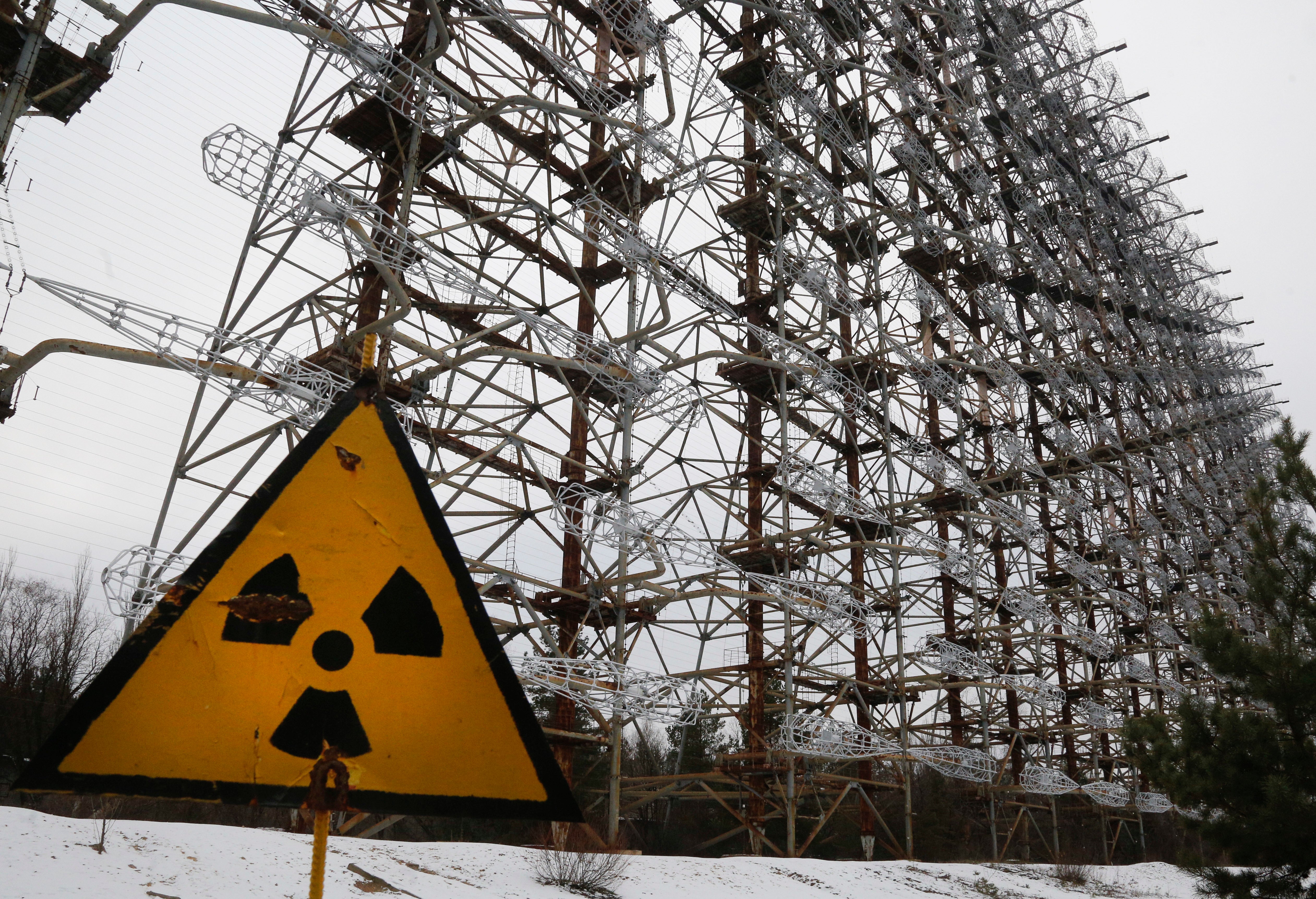Chernobyl ‘cut off from grid by Russians’, sparking fears over cooling of spent nuclear fuel
Work to repair connection not possible because fighting is still under way
Your support helps us to tell the story
From reproductive rights to climate change to Big Tech, The Independent is on the ground when the story is developing. Whether it's investigating the financials of Elon Musk's pro-Trump PAC or producing our latest documentary, 'The A Word', which shines a light on the American women fighting for reproductive rights, we know how important it is to parse out the facts from the messaging.
At such a critical moment in US history, we need reporters on the ground. Your donation allows us to keep sending journalists to speak to both sides of the story.
The Independent is trusted by Americans across the entire political spectrum. And unlike many other quality news outlets, we choose not to lock Americans out of our reporting and analysis with paywalls. We believe quality journalism should be available to everyone, paid for by those who can afford it.
Your support makes all the difference.Ukraine’s state power operator has warned that Russian forces have disconnected the Chernobyl nuclear plant from the grid, sparking fears over the cooling of spent fuel.
Energoatom said radioactive substances could be released into the air if power is not restored.
Work to repair the connection, which has been occupied by Russian troops for several days, has not been possible because fighting is under way, it said.
A 750Kw power line connecting the site to the grid has been severed, Energoatom said, although it was not immediately clear how this happened or what Russian forces were doing to resolve the issue.
The State Service of Special Communications and Information Protection of Ukraine, the country’s security and intelligence service, tweeted that there were 20,000 spent fuel assemblies that required cooling.
“They need constant cooling. Which is possible only if there is electricity. If it is not there, the pumps will not cool. As a result, the temperature in the holding pools will increase,” the agency said.
“After that evaporation will occur, that will lead to nuclear discharge. The wind can transfer the radioactive cloud to other regions of Ukraine, Belarus, Russia and Europe. In addition, there is no ventilation inside the facility.
Read next: American couple’s surrogate twins saved in daring rescue from Ukraine
“All personnel there will receive a dangerous dose of radiation. The fire extinguishing system also does not work, and this is a huge risk of fire caused by shelling. The fight still goes on making it impossible to carry out repairs and restore power.”

Dmytro Kuleba, Ukraine’s foreign minister, confirmed the only grid supplying Chernobyl had been damaged, resulting in the plant losing “all electric supply”.
“I call on the international community to urgently demand Russia to cease fire and allow repair units to restore power supply,” he tweeted.
“Reserve diesel generators have a 48-hour capacity to power the Chornobyl NPP. After that, cooling systems of the storage facility for spent nuclear fuel will stop, making radiation leaks imminent. Putin’s barbaric war puts entire Europe in danger. He must stop it immediately!”
Earlier on Wednesday, Ukrainian Energy Minister Herman Halushchenko said he did not know what the radiation levels were at Chernobyl as authorities have not heard about what is happening there since it was seized by the Russians.
He said Ukraine also had no control over what was happening at the occupied Zaporizhzhia nuclear power plant in the south of the country, where it said 400 Russian troops were stationed.

On Tuesday, the UN nuclear watchdog said the systems that were installed to monitor nuclear material at the radioactive waste facilities at Chernobyl had stopped transmitting data.
“The Director General ... indicated that remote data transmission from safeguards monitoring systems installed at the Chornobyl NPP had been lost,” the International Atomic Energy Agency (IAEA) said in a statement.
Staff working at the site of the 1986 nuclear accident should be rotating regularly but the same workers have been on duty since the day before the Russian military entered the site on 24 February. Staff had been “in effect living there for the past 13 days”, the regulator said.
“I’m deeply concerned about the difficult and stressful situation facing staff at the Chornobyl nuclear power plant and the potential risks this entails for nuclear safety. I call on the forces in effective control of the site to urgently facilitate the safe rotation of personnel there,” Rafael Mariano Grossi, IAEA’s director general, said.

The handling of nuclear material at the plant has been put on hold for the time being, the regulator added.
The site, located in an exclusion zone, includes decommissioned reactors as well as radioactive waste facilities. The regulatory authority said it had only been able to establish communication with the plant via e-mail.
Regarding the rest of Ukraine’s nuclear plants, the IAEA said eight of 15 reactors were operating, including two at the Zaporizhzhya site which had been shelled by Russian forces last week. Radiation levels at the sites were normal, it said.
Energoatom warned that Russian troops were storing large amounts of “explosives and weapons” at the Zaporizhzhya power plant and that station employees were “under strong psychological pressure from the occupiers”.
“An accident can happen at any moment, and its consequences are unpredictable!” the agency wrote in an update.




Join our commenting forum
Join thought-provoking conversations, follow other Independent readers and see their replies
Comments